By Vince de Jong & Marijne Scherjon
RIO DE JANEIRO, BRAZIL – Rio de Janeiro, ‘the marvelous city’, owes its extraordinary, world-famous looks to its location in Guanabara Bay. However, continued urbanization has put the bay under great pressure. Almost 16 million people now live around the bay, making it one of the world’s most densely populated urban areas.
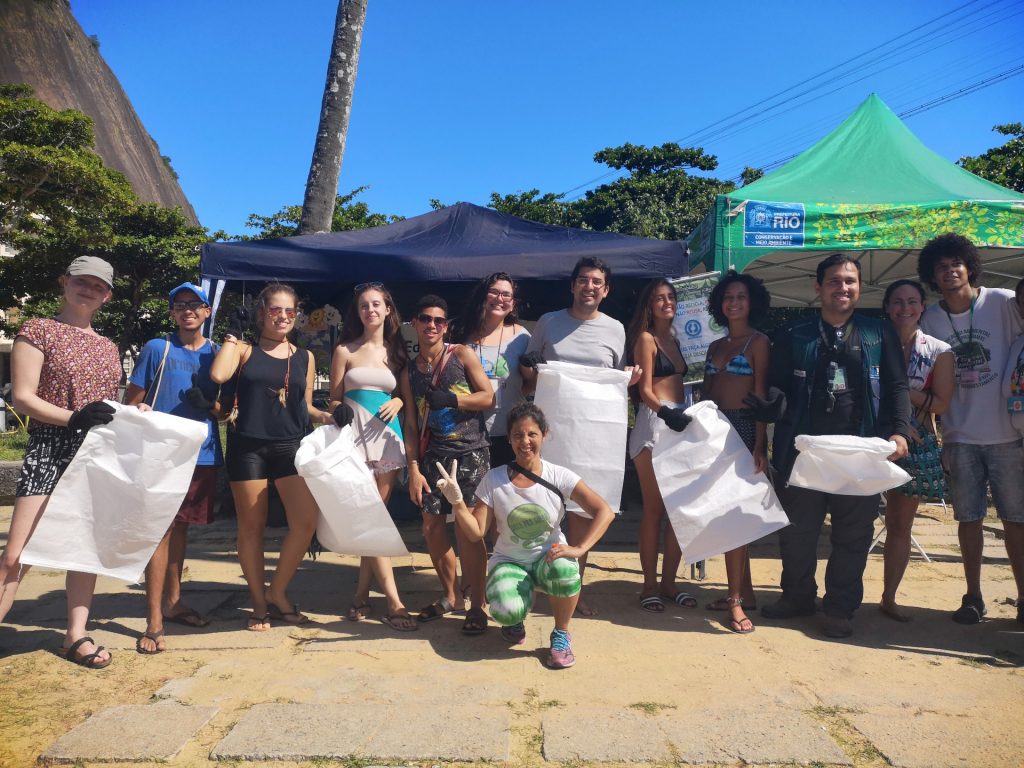
Its rich and diverse ecosystem has suffered severely from the lack of a proper sewage system. More than 60 percent of Rio’s sewage flows into the bay untreated! In addition, illegally dumped industrial waste and oil spills continue to pollute the bay’s waters.
Instituto Mar Urbano is fighting for change. Their goal is to preserve and protect the marine biodiversity of Guanabara Bay and make people aware of the rich life in its waters. “You have to know the bay, to love and protect it,” founder Ricardo Gomes explains.
We join the bay protectors from Instituto Mar Urbano and Verde Mar during a beach clean-up and immediately discover the importance of their work.
We meet with Ricardo Gomes on Praia Vermelha, a beach located at the base of Rio’s famous Sugarloaf Mountain. Although Ricardo is still recovering from an illness, sitting at home is not an option for him. He fiercely explains that in twenty to twenty-five years, 90% of the ocean’s coral will be gone. This will lead to a loss of 20% of the marine biodiversity, which will lead to food insecurity for one billion people.
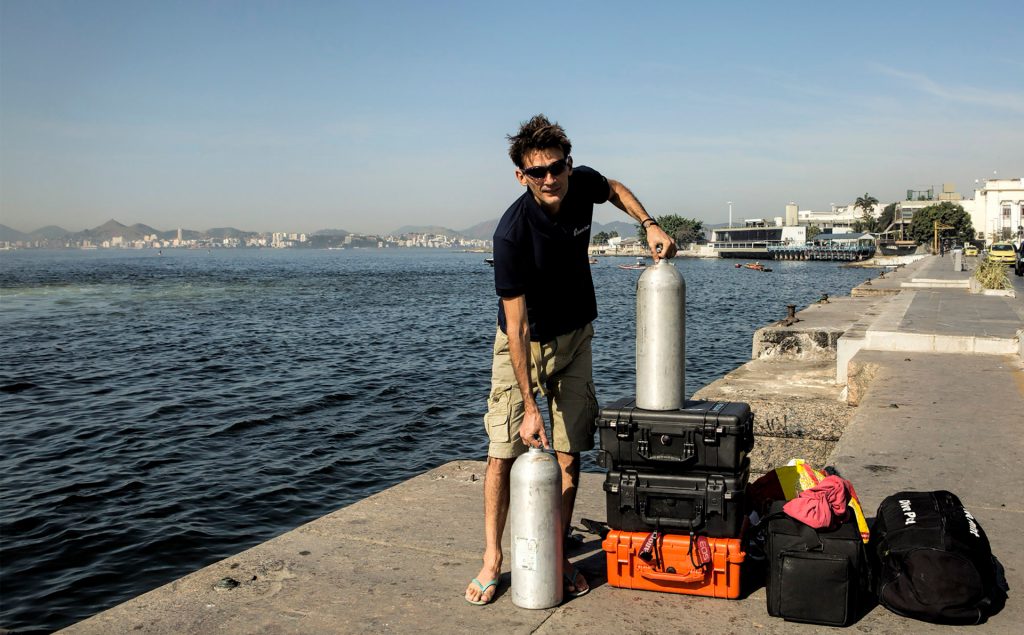
Ricardo further explains that the critical situation of the bay reflects what people are doing to the ocean at large. For him, this is a unique moment in history. Today, it is still possible to convince people about protecting the marine biodiversity with the beauty of, and life in, the bay.
“If the predictions are correct, soon the beauty of the bay will be gone, and we can only use fear to protect it.”
The turning point for Ricardo
In 2017, filmmaker Ricardo Gomes published the documentary Baía Urbana. He did 42 diving expeditions to find out how much marine life still exists in the city’s bay. During these expeditions, he was fighting his fears, but also found his life’s purpose. Showing the public that the Bay is actually full of life to wake up their desire to preserve it, became his new life goal.
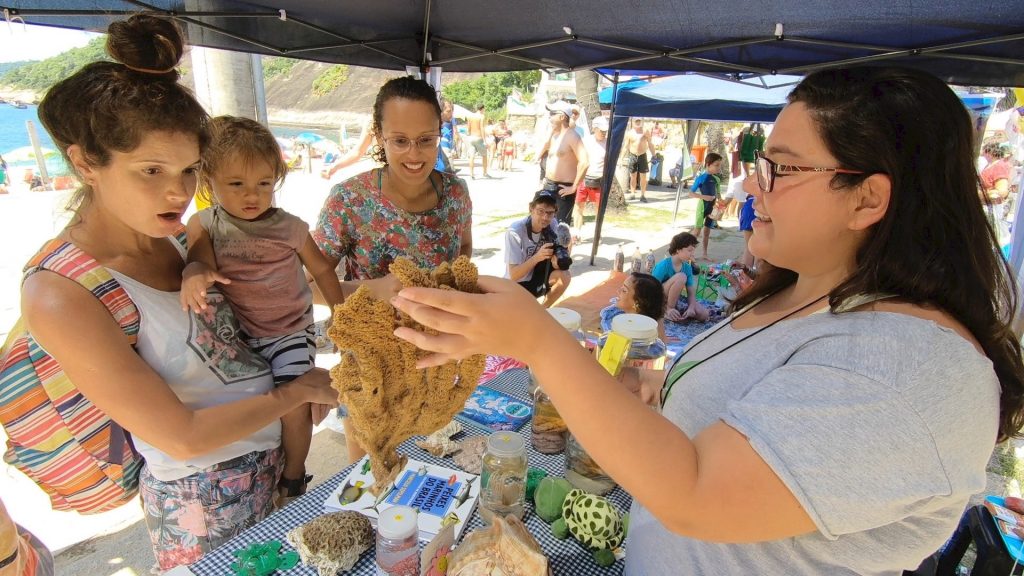
He quit his job and founded Instituto Mar Urbano to generate and share knowledge about the bay’s maritime environment. Ricardo’s ultimate dream for the future is that when his daughter reaches his age, the ocean will still be full of life.
Let’s clean the beach!
Together with the people from Projeto Verde Mar (a part of Instituto Mar Urbano), we put on our gloves and enter Praia Vermelha. In addition to picking up trash on the beach, divers scout for waste under water. After a hot afternoon, we have collected hundreds of cigarettes, straws, and plastic bottles. Divers find some abandoned fishing nets and a lost boot. A great clean-up, but that wasn’t the sole purpose of today.
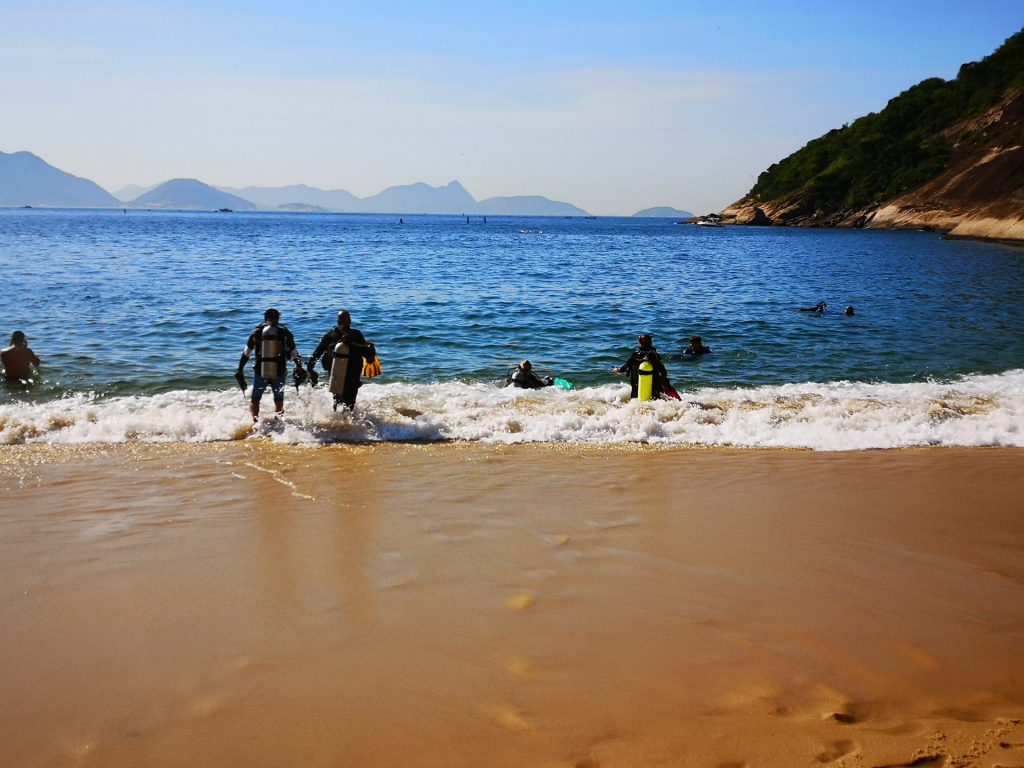
Ricardo explains that Praia Vermelha is actually one of the cleanest and most popular beaches in Rio de Janeiro. “This cleanup is symbolic. By cleaning the beach together, people can discover a possibility to preserve the bay and get to know more about it.”
To spread the cause, Instituto Mar Urbano also gives lectures at schools and makes videos to educate children about Guanabara Bay.
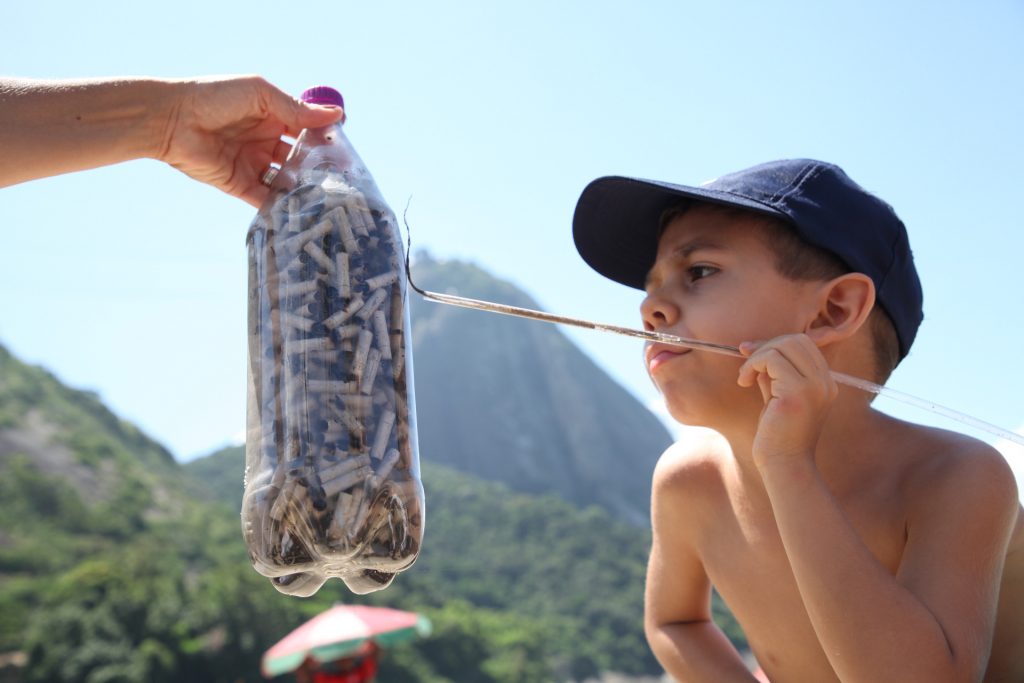
“Brazilians have to be informed about life in the ocean. They know more about the Chinese panda than the endangered dolphins swimming in their bay.”
Ricardo’s admirable perseverance in protecting the bay really sinks in after we go for a swim to finish off the day. All of a sudden, hundreds of dead fish wash ashore, chasing people out of the water. Three men immediately act and try to catch the group of dead fish, with a net. Whether this was a spontaneous and slightly heroic act, or they simply have to do this every day, is still unknown to us.

